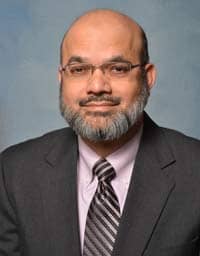 |
One of the most important trends we will see in health care over the next 10 to 15 years is medical equipment becoming smarter and more effective through a two-way interface with medical information management systems,” says Kenneth Maddock, BSEET, corporate director of biomedical technology services, Baylor Healthcare System (see the April 2007 cover story). “This obviously has huge implications for those responsible for medical equipment support. It will be crucial for those responsible for biomedical support to understand interfaces and medical equipment management databases; not only to facilitate effective support, but also to give them the knowledge to help to drive effective change.”
On February 24, Maddock will present the keynote speech at the HIMSS/ACCE Clinical Engineering and IT Leadership Forum, a full-day program as part of the 2008 Annual Healthcare Information and Management Systems Society (HIMSS) Conference & Exhibition in Orlando, Fla. Maddock will discuss how to cope with the technology “tsunami” and will place the relationship of clinical engineering and IT in the perspective of the hospital as an integral organization.
“The HIMSS Annual Conference provides an excellent opportunity for clinical engineers, biomedical technicians, and managers to be on the leading edge of the wave, providing them with the information needed to help drive health care improvement,” he says.
HIMSS will offer attendees more than 200 educational sessions and numerous symposiums and showcases to take them through the latest doors that are opening in HIT. The clinical engineering forum is packed with sessions covering plug and play, the challenges of wireless (cohosted by L. Michael Fraai, who graces this month’s cover), enterprise integration, and other leading-edge topics in HIT and management systems that will give attendees knowledge to use now and will help foster collaboration between clinical engineering and IT.
At 24×7 we recognize your challenges and strive to include articles that directly link you to ideas and answers concerning these new ways of doing business with insight from those instrumental in guiding this transformation. Are you a manager who is attending HIMSS? When you return, what kind of session can you hold with your staff to educate them? Maybe the IT manager is attending and you can collaborate a training session with both departments.
If you’re a CE or BMET, are you or your manager attending? Can you help facilitate a training session for both departments? By learning about HIMSS, I hope it will encourage you to get involved; in fact, I hope you’ll get involved in anything that will strengthen your place in the department and the hospital. By participating in the development of your department’s growth, you can become a catalyst for change.
Julie Kirst




